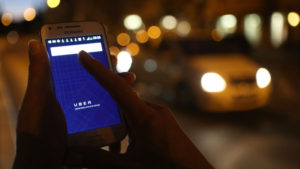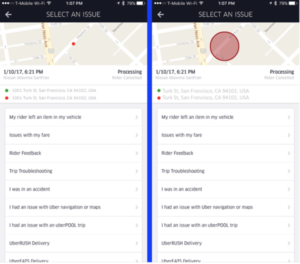In  a pilot program launching soon, Uber will begin obscuring riders’ exact pickup and drop-off locations in the trip history displayed to drivers. Instead, it will display a broader location area.
a pilot program launching soon, Uber will begin obscuring riders’ exact pickup and drop-off locations in the trip history displayed to drivers. Instead, it will display a broader location area.
The change is intended to enhance rider privacy and safety, the first of several upcoming changes Uber is making to limit the exposure of users’ location data.
Currently, Uber drivers are given a record of the precise drop-off and pickup addresses in their trip history. The addresses are stored indefinitely in a driver’s trip history, which enables them go back at any time and look at a rider’s address. That data is maintained even if a rider deletes their account and data from Uber.
“Location data is our most sensitive information, and we are doing everything we can do to protect privacy around it,” an Uber spokesperson said. “The new design provides enough information for drivers to identify past trips for customer support issues or earning disputes without granting them ongoing access to rider addresses.”
Women have spoken out for years about creepy experiences with drivers on various ride-hailing platforms who used the phone numbers and addresses provided through the app to stalk or harass women. Obscuring addresses will give riders an extra layer of protection.
The  change will also help Uber comply with the European Union’s new General Data Protection Regulation, which requires tech companies to allow users to delete their data but also requires companies to give users access to their own data. When the new feature rolls out, it will strike a better compromise between allowing riders to delete their information while still giving drivers access to their own data.
change will also help Uber comply with the European Union’s new General Data Protection Regulation, which requires tech companies to allow users to delete their data but also requires companies to give users access to their own data. When the new feature rolls out, it will strike a better compromise between allowing riders to delete their information while still giving drivers access to their own data.
Uber started rolling out a new driver app last week, based on feedback from drivers. The location-fuzzing pilot will begin once that rollout is complete.
“Obviously with this being a new feature focused on privacy, we want to make sure it successfully meets that goal before pushing it out broadly,” an Uber spokesperson said. “However, regardless of design/UX tweaks needed, we fully intend on making this a default setting in the coming months.”
Source: Gizmodo

You must be logged in to post a comment Login